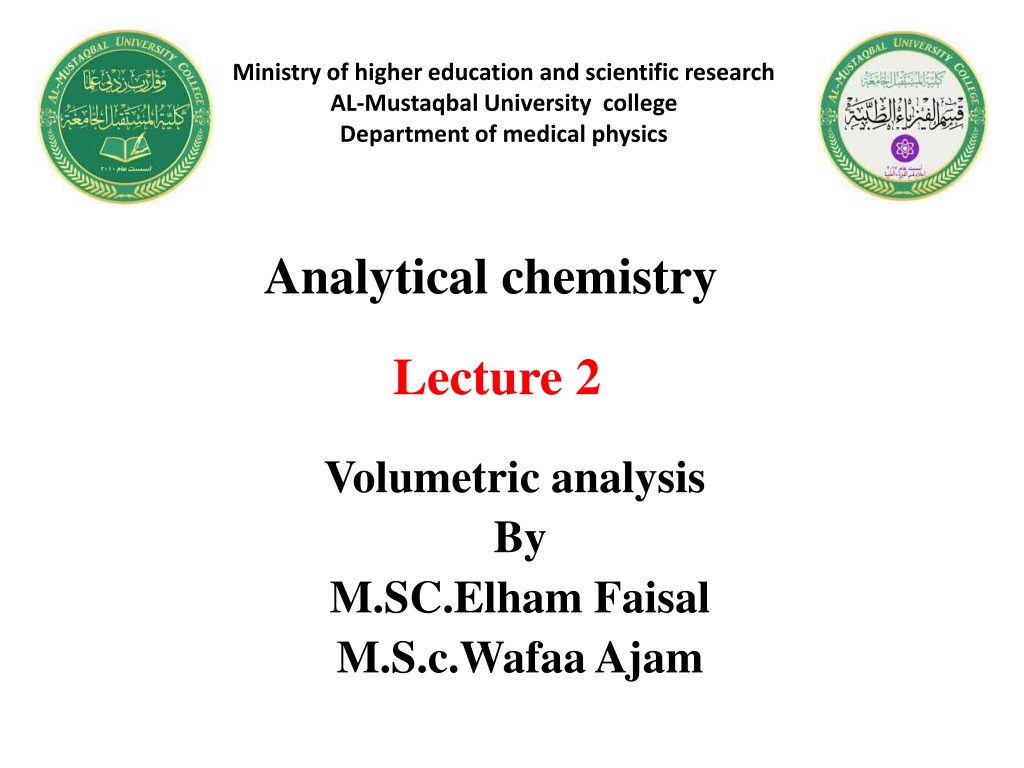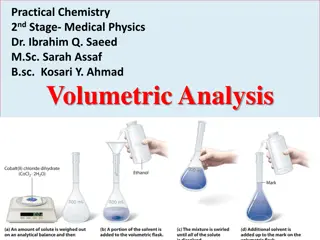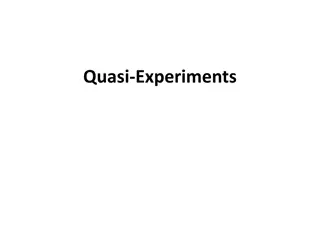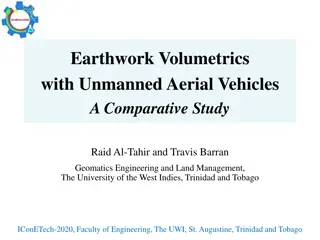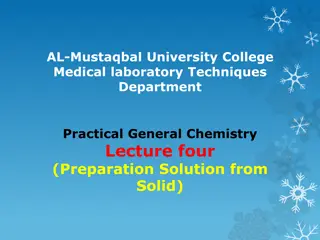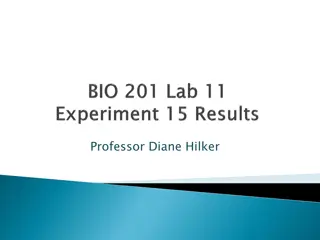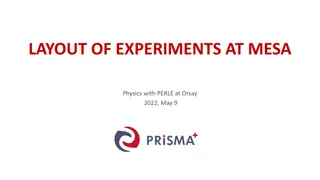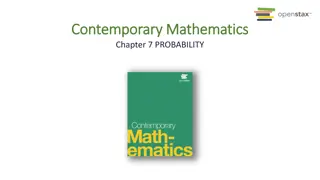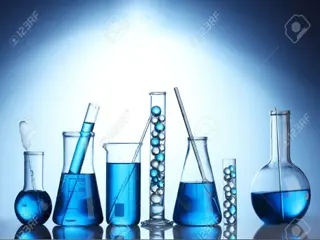Understanding Volumetric Analysis in Chemical Experiments
Chemical analysis is crucial in studying material composition. Volumetric analysis, a key procedure, involves measuring reaction volumes in solutions to determine substance concentrations. This method utilizes titration and different chemical reaction types like acid-base and precipitation methods. This article explains the importance of accuracy in volume measurement, the relationship between milliliters and cubic centimeters, and tools used to measure liquid volume.
Download Presentation

Please find below an Image/Link to download the presentation.
The content on the website is provided AS IS for your information and personal use only. It may not be sold, licensed, or shared on other websites without obtaining consent from the author. Download presentation by click this link. If you encounter any issues during the download, it is possible that the publisher has removed the file from their server.
E N D
Presentation Transcript
Ministry of higher education and scientific research AL-Mustaqbal University college Department of medical physics Analytical chemistry Lecture 2 Volumetric analysis By M.SC.Elham Faisal M.S.c.WafaaAjam
Introduction Chemical analysis plays an important role in study of composition or constituents of substances or material. The chemical analysis is broadly divided into two types: Qualitative analysis Quantitative analysis
The volumetric is a chemical analytical procedure based on measurement of volumes of reaction in solutions. The weight of the required constituents is indirectly obtained by measuring the volume of a solution of known composition required to react with a known volume of a solution containing an unknown weight of the desired constituent. This is done by a process known as titration which is divided into four types depending upon the nature of the chemical reaction . The four types are: a. Acid base or neutralization methods b. Precipitation methods c. Complex metric methods d. Oxidation reduction methods
In volumetric analysis, concentration of substances are found out by volume determination. The unit used for measurement of volume of a liquid or solution is litre . The litre is defined as: the volume of one cubic decimeter or one kilogram of water at its maximum density at 4 C.
The millilitre is the thousandth part of a litre. The cubic centimeter (cm3) is the volume occupied by a cube such that each edge of the cube is one centimeter in length. The relationship between millilitre and cubic centimeter is 1000 ml = 1000.028 cc The term ml is more correct
Accuracy and the Measurement of Volume ACCURACY :is the error associated with how close a measurement is to the true or actual value. If an instrument gives values that are very close to the true value we say that it isACCURATE. Example: A graduated cylinder upon measuring the same sample three times gave 566 mL, 584 mL, and 541 mL.The average of these three values is 563.7 mL. If the true value was 563.688 mL, we would say that the average was accurate but the individual measurements were neither accurate nor precise.
PRECISION : is the error associated with how close several measurements of the same quantity are to each other. If an instrument measurements gives values that are very close to each other we say that the instrument is PRECISE. upon repeated Example: If the measurements in the above example were 563 mL, 564 mL, and 564 mL (average = 563.7 mL) and the true value was 563.688 mL then the measurements are both precise and accurate. The last case is, ofcourse, the idea
Methods of Expressing Concentration of solutions There are many systems contraction of solutions. Weight of solute present in a given volume of solution. Moles of solute present in one litre of solution, called molarity. Gram equivalents of solute present in one litre of solution, called normality. Percentage of solute by weight in a solution of known specific gravity. of expressing the
1-Weight of Solute per Unit Volume of Solution In preparation of solution using this system, a known weight of the solute is dissolved and diluted to known volume. If accuracy is required, the solute is weighed and transferred to a volumetric flask, and diluted to a known volume. The concentration is usually expressed as grams of solute per millilitre of solution. Any multiple or fractional part of such solution will contain a known weight of solute.
2. Molarity a. A mole : The molecular weight expressed in grams of any substance is called as mole or gram molecule of the substance. For example, sodium chloride has molecular weight 58.5g of sodium chloride means one mole of it. b. Mill mole : The mole is very large unit, hence a smaller unit which is one thousandth of it, known as mill mole is used. Thus 1 mole = 1000 mill moles. c. Molar Solution : A molar solution is defined as the solution containing one mole of the solute in a litre of its solution. For example 40g of NaOH is one litre of solution is called as 1M NaOH solution.
Weight of solute in grams Number of Moles = . Molecular weight of the solute
Molarity of Solution : It is defined as the number of moles of the solute present in one litre of its solution. It can also be defined as number of millimoles of a solute present in one millilitre of its solution. Number of moles of the solute Molarity = . Volume of the solution in litre Number of moles = Molarity x Litre Number of millimoles of the solute Molarity = . Volume of the solution in millilitre Number of millimoles = Molarity x MilliLitres
3. Normality The concentration of solution can also be expressed in terms of normality. Various terms involved in it are : Equivalent Weight : The equivalent weight of a substance (element or compound) as: The number of parts by weight of it, that will combine with or displace directly or indirectly 1.008 parts by weight of hydrogen, 8 parts by weight of oxygen, 35.5 parts by weight chlorine or the equivalent parts by weight of another element .
Milliequivalent Weight :It is obtained by dividing the equivalent weight by 1000. Gram Equivalent Weight : It is the equivalent weight expressed in grams. Equivalent weight of a substance = 1 equivalent of a substance = Equivalent weight of substance in grams. Milligram Equivalent Weight : It is obtained by dividing the gram equivalent weight by 1000.
Normality of Solution : Normality is a system of expressing on centration based on number of equivalents of solute present in one litre of solution or the number of milliequivalents of solute present in one millilitre of a solution. Number of equivalents of the solute Normality = . Volume of titration in litre Number of milliequivalents of the solute = .. ... Volume of the solution in millilitre Number of gram equivalents = Normality x Litres
